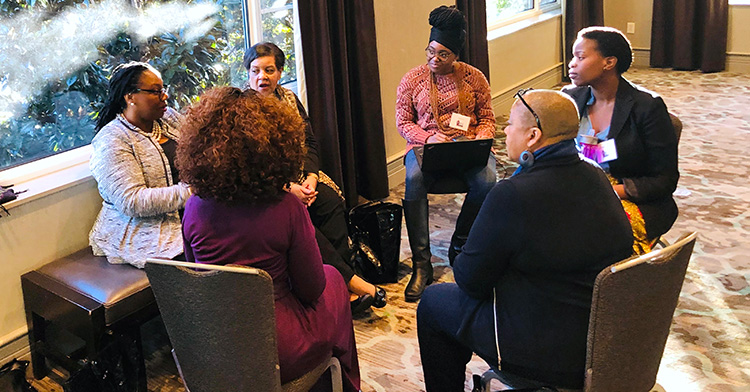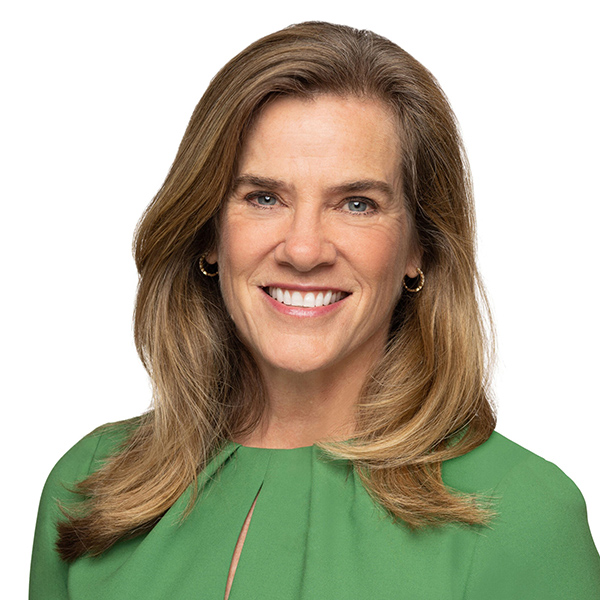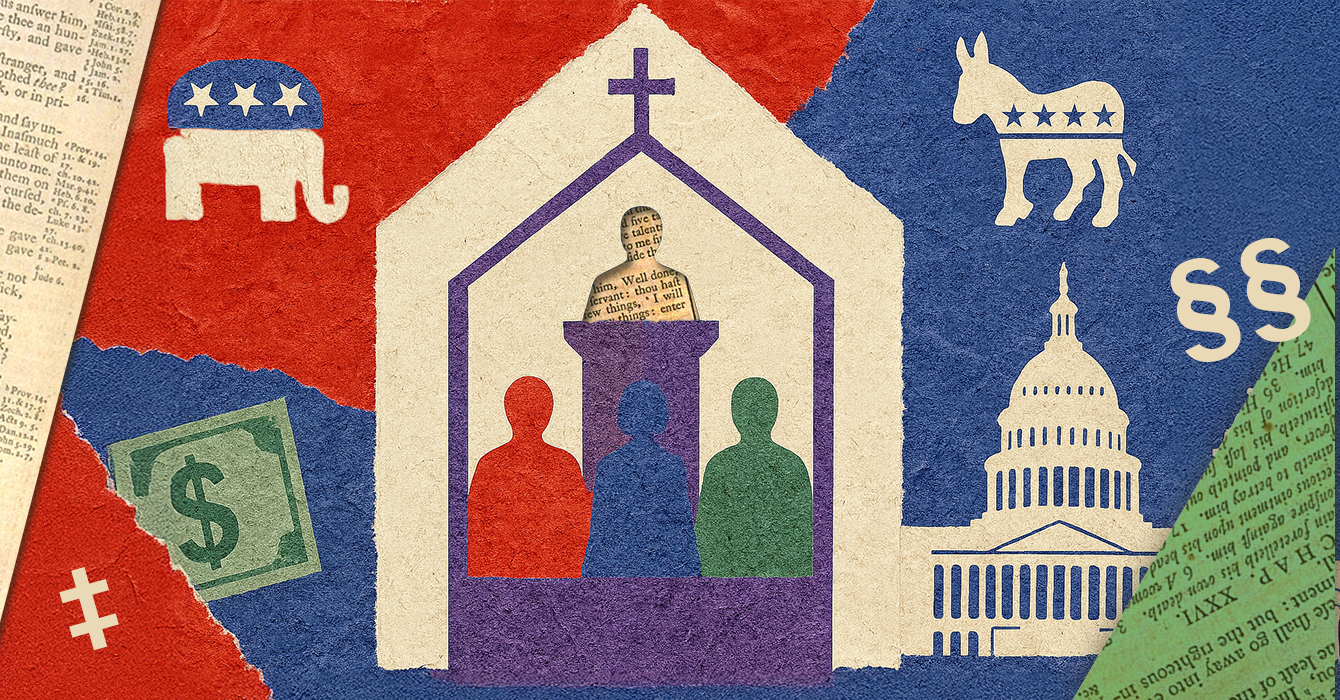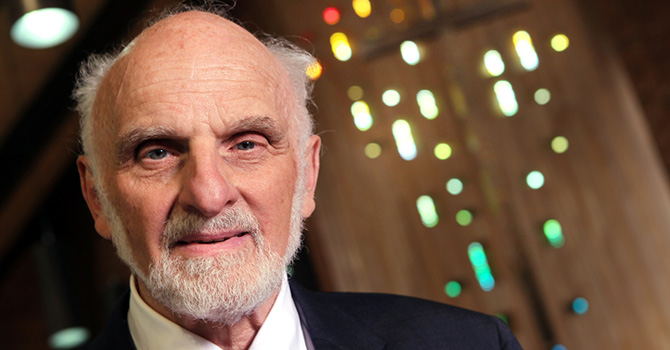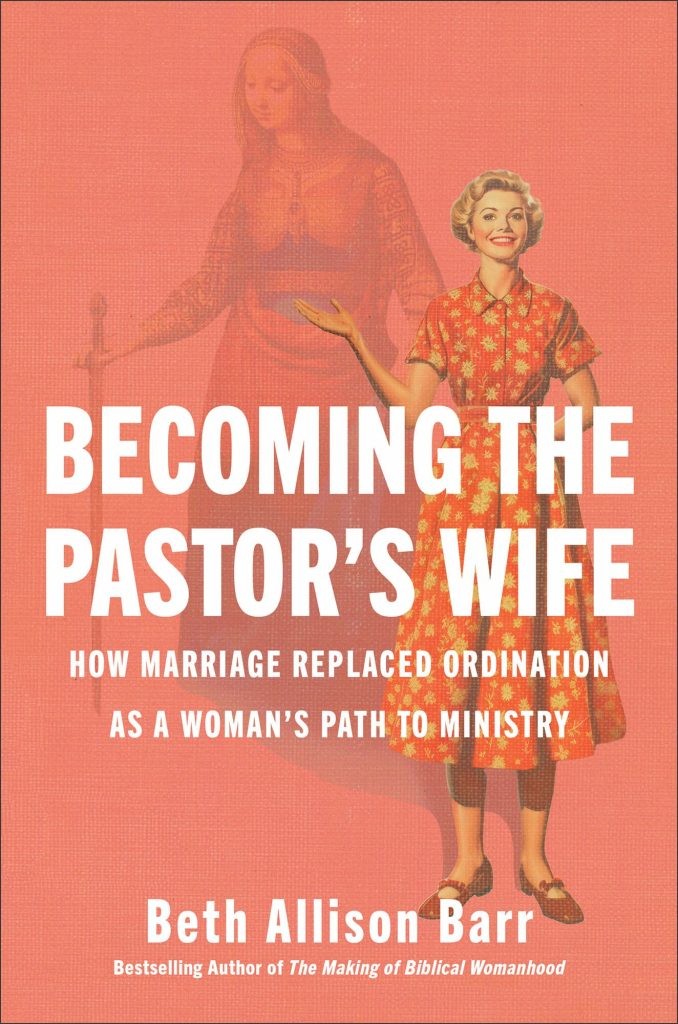It was summertime, and Jim Singleton was meeting in North Carolina with Leighton Ford, a minister and mentor as well as an accomplished painter.
Ford asked Singleton a simple question: “Jim, tell me how many different shades of green you are seeing.”
Singleton looked at the surrounding hills.
“I was seeing one shade of green until he asked me that,” Singleton said. “And then I realized, ‘Oh, I think I can count nine different shades of green.’
“That’s being attentive.”
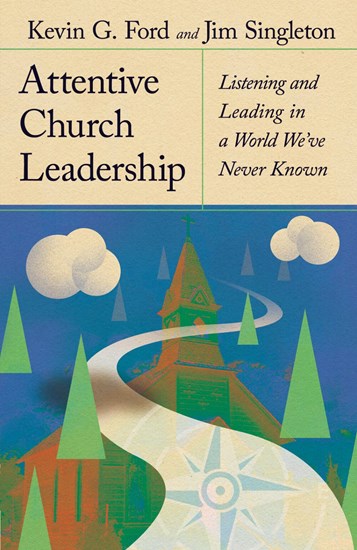
Attentiveness — to other people, to congregations, to the world around us and to God — is key to being an effective leader, Singleton and co-author Kevin Ford argue in their new book, “Attentive Church Leadership: Listening and Leading in a World We’ve Never Known.”
In an anxious time, attentive leaders are better able to build trust, lead others, and discern how and when to innovate. The book draws on the two men’s long experience in ministry, teaching, mentoring and consulting to offer stories, examples and lessons about developing and practicing attentive church leadership.
Singleton is the executive director of missional leadership for Leighton Ford Ministries, as well as a professor of pastoral leadership and evangelism at Gordon-Conwell Theological Seminary. Kevin Ford, who is the son of Leighton Ford, serves as LFM’s chief catalyst.
Singleton spoke with Faith & Leadership’s Sally Hicks about how leaders can develop habits of attentiveness and how that, in turn, can encourage congregations to find their “true north.” The following is an edited transcript.
Faith & Leadership: Why is attentiveness such an important facet of leadership?

Jim Singleton: Kevin and I work at Leighton Ford Ministries, and in 2008, Leighton wrote a book called “The Attentive Life.” It’s a spiritual formation book that is urging the reader to pay attention to all facets of life. And that means we have to go slow enough to observe and to reflect and to thus pay attention. That’s where lots of our self-awareness and social awareness comes from, from paying attention.
In my very first encounter with [Leighton], he sat down with a legal pad and a pencil and asked me the most provocative questions I’ve ever been asked about my life. And he actually listened. Then he would tie things together and ask, “Did you notice this and this?” That’s attentiveness.
I’ve been mostly a pastor for about 25 years and then a professor for the last 12. I teach courses in leadership and I work with seminary students, and they’re not that attentive. Nobody’s ever taught them to look for how many shades of green, how many shades of concurrence are you hearing from your board, how many heart pangs have your congregation expressed.
Learning to be attentive is the first half of the book. And so it’s somewhat oriented to pastors and leaders.
Then the second half is really more about the system — are we attentive to the system. Kevin is mostly a church consultant, working with congregations in strategic plans. I’m mostly a coach to pastors. My primary job is to ask these questions of attentiveness, like Leighton has asked me, so that they can begin to notice what in fact they are seeing.
F&L: How does one deal with anxiety, both in one’s self as a leader and in one’s congregation or organization?
JS: Self-awareness and social awareness are the first keys. “Am I anxious? I’m feeling something. What is that?” The first definition I ever heard of anxiety, probably in Psychology 101, was that it’s fear in search of an object. Meaning, “I’m afraid of something, but I can’t tell you right now what exactly I’m afraid of.” So it’s learning to name that.
Congregations, typically in a family-systems understanding, have lots of anxiety that’s just free-floating. It’s just there. Part of the reason it’s there is that it’s a voluntary organization — it has lots of ambiguity; it doesn’t have clarity. So everyplace there is ambiguity, it’s going to increase the anxiety.
That’s why we like to help churches find their mission, try to find their true north. Because when they have that clarity, it reduces anxiety. When churches start to decline, when finances are declining, all of that again raises church anxiety, which is a collective force. You want your leaders to be the least anxious people in the room. That’s the way that we become guides through the anxiety.
Now, when we have a moment when the culture is extremely anxious, when certain generations are more anxious than they have ever been before, then we’re just swimming in a pool of anxiety.
Recognizing it, naming it, helping people diagnose it, finding clarity through it — those are all the things that I think are important for leadership in what many have termed an age of anxiety.
F&L: We’re in a world with a lot of ambiguity right now.
JS: We are. And pastors have very ambiguous job descriptions. That’s going to heighten our own sense of ambiguity and anxiety.
Are you going to make this church grow? Are you going to increase this church budget all by yourself? Those are often unstated expectations.
F&L: One of the things you mention several times in the book is that the first task of leadership is to discern what needs to be preserved versus what needs to change. In your view, how do you discern that?
JS: We help walk [congregations] through a process of asking, What is our DNA? Can we name that? Can we come up with some lists? Can we come up with some stories? Can we find the heroes that can help us coalesce who we really are?
And when we name that, then what’s essential to keep that moving forward? Are we a church that has had a history of caring about certain groups within this community and we are primarily focused on homelessness, focused on issues related to housing, focused on medical care? What is it that has been our DNA? And how do we preserve that when perhaps the vehicles we have used to express that may need to be different now than they were?
Many of us went through what we call the worship wars in the ’90s, when the choir and the organ were essential in my tradition, and we began to bring guitars into church, and drums. And people were just, “Wait a minute, this is wrong. You can’t do that.” And, of course, the organ itself was quite controversial when it came into being.
How do we sing the Lord’s song in a new land that’s authentic? Is there another way we can express that without losing the real values of the Christian faith? How much is external? How much is internal? So that’s part of the discernment process.
If we do it just according to taste, with no reason, then we’re just in a battle over my taste versus your taste. If there is a missional reason why we have adapted in some way, then maybe that can be a great symbol.
Innovation is not a happy word for lots of people in my tribe. I happen to love innovation, but you have to do it for a reason. Those are very hard decisions, and they usually threaten people, because change normally causes people to feel threatened.
F&L: You write about discerning your true north. Is that as simple as, say, writing a mission statement?
JS: There are three parts that we like to talk about. A mission statement. Then a vision statement, meaning, How do we express that mission right now, in our culture, for these next three to five years? And third, naming what our values are. And typically, it’s the naming of values where so much of our true north begins to be expressed.
I once pastored a very traditional church. They thought of themselves as very traditional. Kevin was actually working with us then, when I was a pastor, as a consultant.
And he said to them, “You’ve actually done some very innovative things in the past.”
“No, we’re not really innovative.”
And he said, “Well, were you not the first church in this area to begin a divorce recovery ministry when most people thought the church shouldn’t even be talking about a divorce?”
“Well, yeah, actually we did do that.”
“And weren’t you the first to ordain a woman into a pastoral position in this area, long before anybody else?”
“Well, yeah, we did that too.”
“OK. So how are you not innovative? How is it that you don’t take risks?”
“Oh, well, maybe we do take risks. And maybe we could take another risk now.”
That was discovering something that was already there but they had relegated to the margins. But they actually had to realize, “Part of our DNA, part of our true north, is we do take risks for the sake of the kingdom.”
But no one would’ve articulated that if Kevin hadn’t been attentive and noticed our history and noticed that there were more innovations than the congregation realized. That’s how you uncover. But it didn’t come until we really began talking about the hero stories and the values.
F&L: You also address mentoring and say that we don’t need more programs; we need relationships. What’s the key in looking at programs versus relationships?
JS: We have a philosophy at Leighton Ford Ministries that we want to create safe times with safe people in safe places, and that people grow in that kind of climate. For 40-plus years now, Leighton has been building pastor or leader groups, mentoring groups, around the country and around the world. They are all stamped with that kind of DNA, but they are not programs in that we have a plan you have to follow in exactly the same way.
We are recipients of a Thriving in Ministry Lilly grant, and we are now in the process of training more and more leaders to be facilitators and mentors in pastor groups or Christian leader groups. It’s slightly programmatic, but there’s what I would call lots of freedom within it.
Some of our groups meet annually; some of our groups meet monthly; some of our groups meet quarterly. We’re not mandating it. None of those groups have to wear a name tag that they are a Leighton Ford Ministry group. They’re just pastor mentoring groups.
I read the book called “Resilient Ministry,” and I visited with one of the authors and said, “What’s the one takeaway that you really can affirm?”
He said, “The pastors who are in some kind of group with other pastors are making it through this thick season. The pastors that are going it alone are collapsing. So my one takeaway is find a group.”
That’s been very impactful for me.
Would I love to get everybody I know who is doing leadership in a group to run it efficiently with a great program? Maybe, but I’m going to take the risk of just getting them in community with a few basic guiding principles, one of which is attentiveness. Listen, help people hold up the mirror to their souls in a way that they can listen to themselves, and they will find thriving. It’s a mix of the two.
F&L: So you don’t think of it as, “Here are 10 steps for great mentoring.”
JS: No, we really don’t. There’s something about “being with” — Jesus called his disciples to be with him, and that has a grace in it.
The primary agenda in a Leighton Ford mentoring group is to check in with our souls: How is it with your soul? — which is a Wesley question. Through that, we begin to explore: How would you say your physical health is? How is your emotional health? How is your relational health? How is your vocational health, your sense of calling? How is your spiritual relationship with God? Is it thriving? Is it restrictive? What would you say?
Just by asking those simple questions, groups bond and groups grow. And we cheer each other on and walk through valleys with each other. So it’s not a prescriptive “10 steps to …,” but it is an attempt to get more people connected.
F&L: Is there anything you want to address that I haven’t asked about?
JS: If there was one thing that we didn’t address, it would be the issue of trust. Trust is the currency of being a leader.
We tell stories about some people who have built trust in people and in congregations and among leaders.
Losing trust is like making a withdrawal for which you had no deposit, and you are overdrawn. And that usually ends a person’s ministry. One of the things I do in coaching a lot is say, “Now, do you have enough deposits in the bank to make that withdrawal?”
It’s learning to be attentive to how the congregation will perceive this action. Will it be, “That’s just what Jim wanted to do and so we did it, and I don’t agree with it”? Or do we have a sense of, “That was in the right time, in the right flow”?
That’s the hardest thing to teach someone. Understanding the culture enough to know, “When do I have the trust to make a change?”





